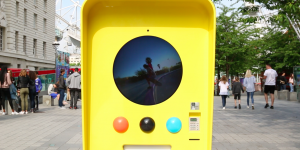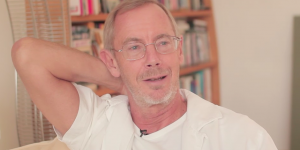Nestlé was “very late” to the startup party, its head of global innovation has admitted. But in playing catch-up, its dedicated platform – the year-old Henri@Nestlé – now carries a mammoth weight on its shoulders, with a remit to improve the health and wellbeing of global consumers across the world.
“Henri is definitely not an accelerator programme,” Gerardo Mazzeo, Nestlé’s global innovation director, asserted when asked to characterise his piloting platform. It’s also “definitely not an idea suggestion box”, which, he believes, is what many of the big corporates actually boast of when they speak about innovation.
“When you dive into the fabric of what they are, they're nothing more than just: ‘Send us your ideas’”, he explained. “They're more internally focused.”
If its competitors – “the Unilevers, the Cokes, the Mondelezes” – are inward looking, Nestlé makes a point of operating to become the very opposite. Since 1997 the company has been striving to transform from a confectionery brand into the world’s leading nutrition, health and wellness company, always looking to add value to the lives of its consumers. This has been translated into the blueprint of Henri: ‘Together, we’ll tackle projects that will make a genuine difference, not just to Nestlé and our partners, but to hundreds of millions of people across the world’, says its website, as if this were an easy job.
“The scope of the work that Henri does is much more than just tech start-ups,” confirmed Mazzeo. “There is a huge dimension of technology, but we're also looking at nutrition, medical products, diagnostic products. We're looking at four legged mammals as well; we have a huge dog and cat business. ”
Late to the sandbox
But while Henri’s remit marries easily with the grandiose plans of the Nestlé brand, its horizon-busting scale exists for another reason – its parent was late to the game when it came to working with startups. While the Unilever Foundry and Mondelez’s Mobile Futures launched in 2014 and 2015 respectively, it was only in 2016 that Nestlé unveiled Henri; by then any listed company worth its salt had begun working with startups.
“The task for Henry is large,” admitted Mazzeo. “But we've designed it that way because we were very late coming into this particular sandbox, compared to everyone else. So we wanted to really raise the bar with our entry.”
One year in, Mazzeo is keeping the bottom line results of the first “wave” of Henri projects close to his chest. Apparently, “the most important criteria that we look at before we even look at the financial metrics is: Does that proposal meet the brief?
“The financial metrics … yes they're important but they're not yet relevant, because we're after the creativity and the ingenuity of the proposal, and making sure that it meets the brief. That discussion of the KPIs, the metrics, that will be much further downstream.”
Global briefs
To be fair to Henri@Nestlé, the projects it is delivering so far are almost as close as you can get to changing the world’s wellbeing. One of the “most challenging” briefs that Mazzeo has seen develop was a project to detect micronutrient deficiency among Philippine consumers who have limited access to clinics and nutritional education. Another was for Nestlé Waters, which is currently developing a non-PET material for its bottles. Other projects currently live on the website include briefs to help families with portion control and to aid mothers who are breastfeeding.
"All innovation projects, irrespective of which business or category they come from, will have their own KPIs or metrics,” said Mazzeo. “We leave that down to ultimately the business owner and the startup to figure out as part of their milestone mapping. Of course [we’re going to look at] return on investment. Of course [we’re going to look at] top and bottom line. But first of all let's make sure that we set ourselves up for success when we're doing the the proof of concept.”
It will be interesting to see whether this world-changing nature of Henri’s projects can sustain pace. After all, Nestlé operates with a “prove that you can do it with this amount of money, and then we'll give you some more” mentality, according to Mazzeo, meaning Henri will only ever be as successful as its last project.
But with such a large and no doubt corporate structure cushioning them, it’s hard to imagine any of its briefs spectacularly failing. Even if they do, innovation misfire is accepted by Nestlé, although it hasn’t always been the case.
“Failure probably wasn't embraced or accepted 10 or 15 years ago as it is today,” Mazzeo. “I think the way that the organisation has woken up to the challenges of our competitors – from very small nimble agile ones to the likes of our peer group. There's more of this idea that if you fail earlier, you learn faster. That's now starting to come through.
“If you imagine the size of this Nestlé animal, that's always going to take time. But I think slowly it's starting to push through the organization.”
This change to a more agile and daring business culture has come from the top. The board is apparently “really pushing a much greater risk taking ability within the organisation” and for Mazzeo, the arrival of chief executive Mark Schneider in January this year will only speed up that appetite for innovation.
According to the innovation director, the company only needs to look east to its outpost in Japan to garner inspiration on this front.
“They're probably the only market that we have within the Nestlé family that are truly pushing the boundaries,” said Mazzeo. “They've experimented with premium boutiques for KitKat, they've introduced chatbots as ways to welcome consumers into boutiques, they were experimenting with different business models five, six, seven years ago in terms of how target different pockets of business in society. Culturally they're much more open to this type of innovation."
He added: “When you go to say some of our other more developed mature markets, given the maturity of the business that they're in and also the competitive nature that they're surrounded with, I suppose operational tasks takeover. But there’s been a much greater push into making sure that we're trying to be much more creative and much more different in the way that we do business.”




















